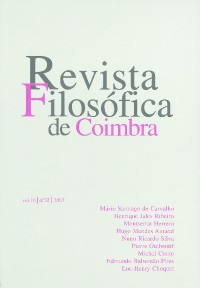Please use this identifier to cite or link to this item:
https://hdl.handle.net/10316.2/34234| Title: | Towards a law of cultural ceremonial | Authors: | Pires, Edmundo Balsemão | Issue Date: | 2007 | Publisher: | Faculdade de Letras da Universidade de Coimbra, Instituto de Estudos Filosóficos | Abstract: | Starting with the formulation of a general question one have to ask what are the distinctions one uses in order to schematize the meaning of the increasing juridical translation of cultural conflict. «Cultural Rights» is an expression to be analysed within a specific political terminological frame, which is defined by the circumstances of the historical transformation of subjective rights into citizenship rights. «Religious Rights» is the modern expression for the claim of autonomy, separation and independence towards political sovereignty and dominant religious forms. The philosophical discussion on the topic of tolerance from Locke to Voltaire turns itself to the problem of the adequacy of some religious ceremonials to a public space free of religious symbols. Rights can only be granted to religious communities if it is consented a certain limit for mutual indifference and freedom. The concepts of ceremonial and ceremonial symbols became central along the religious debates of the XVI-XVII and XVIII centuries. Since then one can notice that ceremonial symbols are always treated as aspects of self-identification of some communities. On the other side the semantics of the modern “Civil Society” appears as the sociological conditioning of a contract of mutual indifference between different religious ceremonials. After colonization and the discovery of the “primitive mind” and “primitive society” by ethnologists we face many transformations of the meaning of ceremonial symbols. Now, these symbols are supposed to be the ciphered soul of other cultures. The ethnological mentality created this mixture between cultural artefacts and ceremonials, an interpretative attitude towards alien symbols, the need for cultural translation and the idea of the irreplaceable. After globalization and the migration of native informants we can describe two main strategies in the cultural use of ceremonial symbols: distinction strategies and recognition strategies. The main argument in my paper claims that “cultural rights” are normative responses of the law system to a need of consistency between these two communicative strategies. I will analyse recent literature about the so called “multiculturalism”, the debates between the adepts of universalism and the communitarians. But I will focus the presentation on the communicative use of that twofold cultural strategy, which leads to the individuation of cultures in contemporary societies. | URI: | https://hdl.handle.net/10316.2/34234 | ISSN: | 0872-0851 |
| Appears in Collections: | Revista Filosófica de Coimbra |
Files in This Item:
| File | Description | Size | Format | |
|---|---|---|---|---|
| rfc32_artigo9.pdf | 4.59 MB | Adobe PDF |  |
Items in DSpace are protected by copyright, with all rights reserved, unless otherwise indicated.
